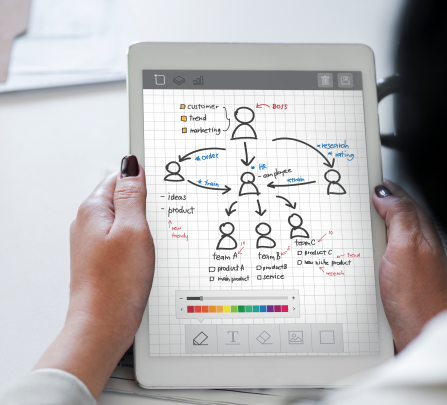- Services
- UX Research
UX Research:
Bridge to Real Experiences
How well do you know your users?
The answer is easier with User Experience (UX) Research. Think of it as the secret sauce to the success of your digital interactions. Understanding your users is the first step to creating intuitive, usable, and enjoyable products/services.
5 benefits of UX Research in your strategy for success
Happy Customers Loyal Customers
UX Research helps create digital journeys that best meet users’ needs. Identifying and addressing usability issues early on is key to earning their satisfaction and loyalty.
Better Products Better Business
Valuable insights on your users’ needs inform design choices that align with their expectations. Regular UX research allows continuous improvement and maintains relevance.
Rise Above The Competition
Pioneer changes with data-driven design decisions that set you apart in your industry. Use the competitive advantage to seal your leadership position in the global markets.
Save Time Save Money
Avoid costly design flaws and rework by identifying issues before development. User-centered design improves efficiency by reducing costs and the need for training/support.
Minimize Risks Avoid Losses
Understanding user needs and expectations helps avoid usability issues that may lead to legal problems or financial losses. Prevention using data is better than looking for a cure.
How we do UX Research
We work with you to clarify the project goal – enhance user satisfaction, increase conversion rate, or improve overall usability - to understand what you want to learn from the research.
Research Plan
We identify the methods, participants, and timeline that align with your project goal. Qualitative and quantitative techniques are used to understand user behaviors and expectations.
Research
We gather data using the chosen research plan that includes interviews, surveys, usability testing, etc. and ensure the participants accurately represent your target audience.
We study the information collected using techniques like affinity diagramming and journey mapping to identify patterns, insights, and trends, and share our findings.
Key Methods
User Interview
Surveys
A/B testing
Usability Testing
Analytics
CASE STUDY
Competitive Analysis of Task-based User Interactions Improves E-Learning Platform Performance
FAQs
What is UX Research and why is it crucial in design?
UX research is the process of understanding how people use a product or service. It involves studying user behaviors, needs, and pain points. Designers must prioritize UX research to deliver products that meet user expectations.
What UX research methods does your design agency use?
We use a mix of qualitative and quantitative methods, such as interviews, surveys, usability testing, and analytics. This helps us make sure our designs and experiences drive user satisfaction and loyalty.
How does UX Research impact the design process?
UX research ensures that designs are centered around the user, leading to better products and a more positive user experience. Understanding the user experience helps make informed decisions and validate design concepts.
At what stage of a project should UX Research be initiated?
As early as possible, ideally during the discovery and planning phases to ensure the insights guide the project from concept to launch. Integrating UX research throughout the project lifecycle ensures the goals are met positively.
How does Tentackles ensure UX Research is effective and accurate?
With a clear objective, we meticulously plan and conduct research, ensuring a diverse participant pool that represents the target audience. The gathered data is rigorously analyzed to derive actionable insights to shape design strategies.


